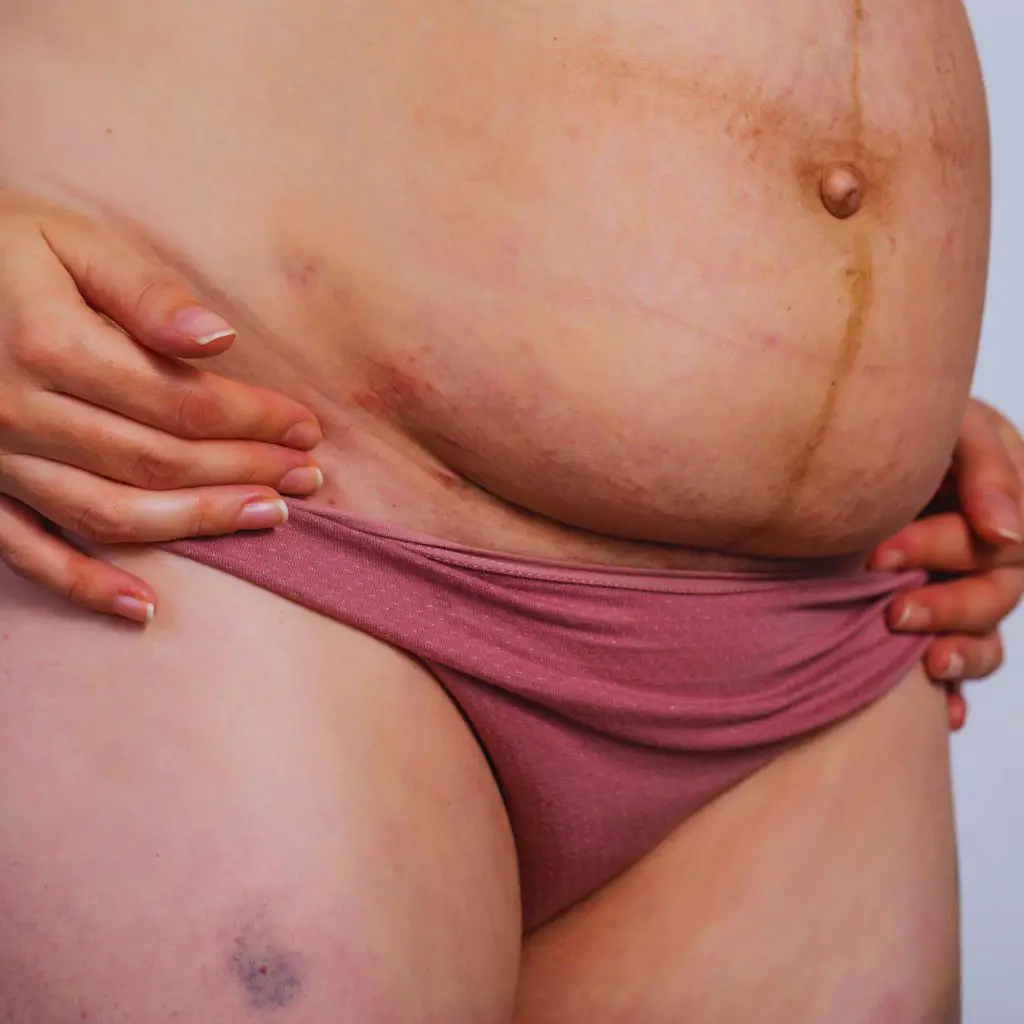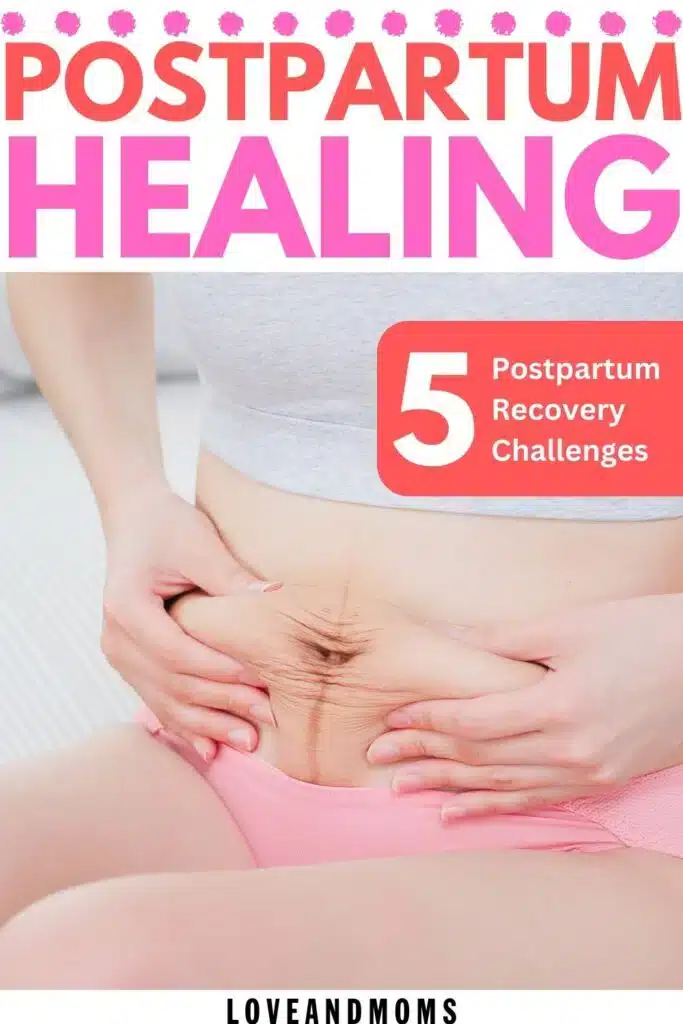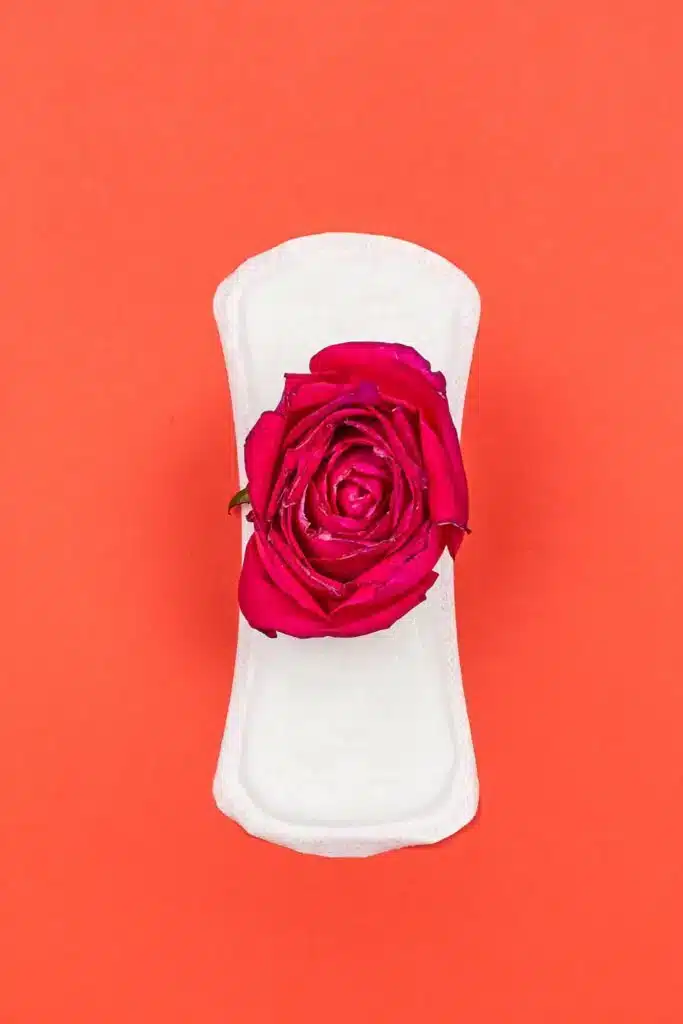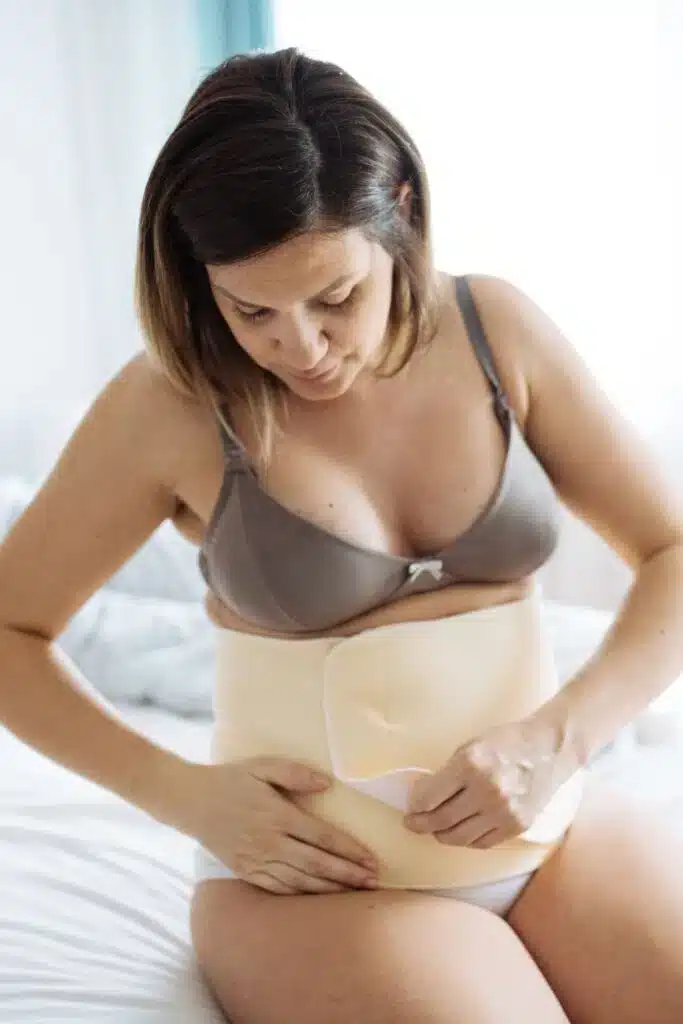This post will address the common bodily postpartum healing challenges new moms and seasoned mothers experience.

For more helpful and fun content, follow me on Pinterest!
This post is not intended to replace medical advice nor is it a medical diagnosis. For informational purposes only.
Postpartum healing is a priority every first time mom should consider when planning for baby’s arrival.
As a new mother, postpartum can be physically and emotionally challenging; I know it was for me, and even writing this 19 months postpartum, there are still spiritual and mental healing to manage.
I can’t even think of a word strong enough to describe what happens physically, spiritually, and mentally during childbirth.
It is what makes us women superhuman, no joke.
Your body has just undergone the intense process of childbirth, and you may be dealing with a range of physical recovery issues.
From healing from childbirth and caring for a C-section wound to managing to bleed and dealing with swelling, giving yourself time and space to take care of yourself during this time is essential.
Bodily postpartum challenges are typical, and it’s okay not to feel 100% and ask for help when needed.
Remember that you are not alone after the birth; everyone’s postpartum recovery timeline is different, and many other women have gone through similar experiences.
With patience and self-care, you will be on the road to recovery in no time.
This post contains the bodily postpartum challenges mothers experience.

Postpartum Healing
Postpartum Incontinence
Have you asked yourself “why do I pee when I cough now?”
Honestly, if coughing and peeing wasn’t happening to you already while you were pregnant, consider this officially your write of passage into motherhood as a first time mom!
Our grandmas, aunties and mom’s complained about it, welp, now we know what it’s like!
Urinary incontinence is one of the more light bodily postpartum challenges.
It is a common problem among women, particularly after childbirth, especially as a first time mom.
There are several types of urinary incontinence, including stress incontinence, which occurs when the muscles that support the bladder are weakened.
Urine leaks out when the person coughs, sneezes, or exercises.
Other types of incontinence include urge incontinence, the sudden and urgent need to urinate, and overflow incontinence, the involuntary leakage of small amounts of urine due to a full bladder.
Childbirth can cause incontinence in several ways.
The pelvic muscles and tissues may be stretched or damaged during delivery, which can lead to incontinence.
Additionally, those pesky progesterone hormones released during pregnancy and childbirth can relax the urinary tract muscles and contribute to incontinence.
Incontinence can be a temporary or a long-term problem.
In some cases, it may resolve on its own with time, while in others, it may require treatment.
Treatment options may include pelvic floor muscle exercises, medication, or surgery.
Caring For a C-section
Internal Pain After C-Section
The mamas who endure a C-section are amazing and so brave!
It is definitely one of the more intense bodily postpartum recovery experiences out there.
Unfortunately, the recovery period for a C Section may sometimes be a little more complicated.
Women who have a cesarean delivery (C-section) will have a surgical wound that needs to heal.
This can involve caring for the wound, managing C-section scar pain, and avoiding certain activities that could strain the wound.
During the postpartum period, women who have had a cesarean delivery (C-section) will need to take care of their C-section wound as it heals.
This may include caring for the incision site, managing pain or discomfort, and watching for signs of infection.
Some women, including myself, love a postpartum belly band for recovery and mom’s who have undergone a C Section may find them helpful too.
If you are looking for a C Section recovery belt, it is important to do your research to ensure it promotes healthy healing and wont interfere with the healing of your scar.
The one I used was this 3 in 1 Postpartum band, although I didn’t have a C Section, it is marketed toward women who have and is mindful of C Section scar pain and support.
It’s important to follow your healthcare provider’s instructions for caring for the C-section wound and to seek medical attention if you have any concerns.
Some common symptoms of infection to look out for include:
- Increased pain
- Redness
- Swelling
- Discharge at the incision site
- Fever
- Chills
- Flu-like symptoms.
It’s also important to remember that healing from a C-section can take time and that it’s normal to have some discomfort during the postpartum period.
As a first time mom, this can be overwhelming, you don’t have to go through it alone and it’s okay to ask for help and support during this time.
Looking for the best postpartum essentials to take care of your postpartum healing? This should help!
21 Best Postpartum Essentials for New Moms
Postpartum Bleeding
Golf Ball Sized Blood Clots

During the postpartum healing period, women may experience bleeding or after birth discharge, known as lochia, as their uterus sheds the lining that is built up during pregnancy.
This bleeding can range from light spotting to heavy bleeding, lasting several weeks after delivery, then tapers off.
It was super heavy for me from the get go, like a long period postpartum style.
I had an undiagnosed imbedded placenta which resulted in a postpartum hemorrhage a couple hours after birth.
Because of this, I was kept at the hospital much longer for recovery and was monitored until I had normal postpartum bleeding.
I was told to look out for egg/gold ball sized blood clots during my recover.
I had one as soon as I got home and freaked out, however, when we called, they said that means your body is clotting to prevent massive blood loss.
I was relieved and had numerous more blood clots over the following week and then they subsided.
Always call your doctor if you experience a golf ball sized blood clot.
There is no normal postpartum bleeding amount, so because that was normal for me doesn’t mean it is for you.
So make sure to be your best advocate and take care of yourself and reach out for help.
It’s essential to wear pads to absorb the bleeding and to change them frequently to prevent irritation and infection.
The best pads for postpartum bleeding and the combo I used are the Stayfree Maxi Overnight Pads mixed with Always Discreet Underwear.
It’s also a good idea to avoid tampons and sexual activity until the bleeding has stopped or until your healthcare provider gives you the okay.
Suppose you are experiencing heavy bleeding or bleeding accompanied by clots, abdominal pain, or fever.
In that case, seeking medical attention is essential as this could signify a more serious issue.
It’s also a good idea to speak with a healthcare provider if you have any concerns about the amount or duration of bleeding during the postpartum period.
Want to hear about Hayden Panettiere’s struggle with her postpartum healing mentally?
Hayden Panettiere on Her Postpartum Depression
Postpartum Swelling
Why Are My Feet Swollen After Giving Birth?
My ankles no joke looked like Fred Flinstone cankles.
What was crazy is I didn’t swell too much other than my hands during pregnancy but I blew up like a damn balloon after!
I was so surprised.
I had my husband massage my feet, ankles and legs to help bring down the swelling.
Pregnancy and childbirth can cause swelling in various body parts, including the feet, ankles, and hands.
This swelling may take some time to resolve after giving birth.
During the postpartum period, women may experience swelling in their limbs, particularly in their feet and ankles.
This is due to fluid accumulation in the body and is a normal part of the postpartum experience.
Swelling can be exacerbated by heat, standing for long periods, and pregnancy-related conditions such as preeclampsia.
To manage postpartum swelling, staying hydrated and elevating your feet when possible is essential.
Avoiding standing or sitting in one position for long periods can also help to reduce swelling.
Wearing comfortable, supportive shoes and avoiding tight clothing can also be helpful.
If you are experiencing severe or persistent swelling, it’s a good idea to speak with a healthcare provider, as it could be a sign of a more serious issue.
Perineal Tears
Perineal Tearing and Episiotomy Stitches
When it comes to postpartum healing, painful perineal tears are a common phenomenon new moms have to contend with, especially first-time moms.
Some women may experience a tear after birth, which can require healing.
This can involve managing discomfort and taking care of the wound.
This is what happened to me; I ended up needing a second-degree tear stitched up.
It was on me; my doctor told me to take a break when pushing, but after being in labor for five days and nearing six as we were approaching midnight, I was exhausted and ready to get her out!
Thus, I tore, and the perineal pain ensued.
During childbirth with episiotomies, a surgical incision is made in the perineum (the area between the vag and anus) to widen the opening of the vag and facilitate delivery.
An episiotomy is usually performed if the baby is in distress or the perineum is not stretching enough to allow the baby to pass through.
Both of these procedures can cause pain and discomfort during the postpartum period.
To manage a painful perineum and discomfort, it’s essential to follow your healthcare provider’s instructions for wound care and to take any prescribed medications as directed.
Ice packs or warm compresses can also help reduce pain and swelling.
I used a sitz bath for after birth perineal pain and healing.
I did it twice a day and I attribute my swift healing with sitz baths and yoni steams.
The sitz bath I used was this by Pure Body Naturals along with Wild Flowers Wellness Yoni Steam to drain out the lochia, and used this ZALIK Hemmoroid Bath to whole the solution over the toilet.
Always ask your health care provider before engaging in these practices if you have any concerns.
That first poo postpartum is scary enough without the thought of dealing with a perineal tear/stitches.
I remembered feeling like they were going to bust with every bowel movement but they never did.
Avoiding constipation, which can strain the perineal area, is also essential.
If you are experiencing severe pain or discomfort, it’s a good idea to speak with a healthcare provider, as they may be able to recommend additional treatment options.
Want to hear about my 5 day labor and epidural wearing off? Here’s the tea!
My Birth Story⎢ A True Blogger Birth Story
Postpartum Healing Takes Work
But You Aren’t Alone

Women’s physical recovery challenges during postpartum can vary greatly.
Some women may experience abdominal pain, bleeding, swelling, and discomfort from episiotomies or tearing.
It’s essential for new mothers to be aware of these challenges and to follow their healthcare provider’s instructions for managing them.
Seeking support and resources, such as pain medication and comfort measures, can also help manage these physical challenges.
Suppose you are experiencing severe or persistent physical issues during the postpartum period.
In that case, it’s essential to speak with a healthcare provider as they may be able to provide additional treatment and support.
Remember, it’s normal to experience physical challenges during the postpartum period and seeking help is a sign of strength and self-care.
You’ll get through this mama!
This post went over the different postpartum healing challenges new moms experience.
Related Reading:
